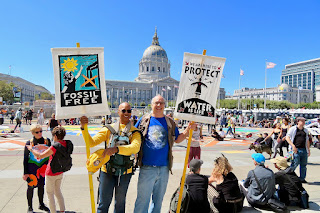Introduction:
File:Climate Change Performance Index.svg - Wikimedia Commons
In the beginning week of our journey into the heart of one of the most crucial challenges of our time, we delve into the complicated tapestry of climate change. This weekly blog series aims not just to scratch the surface but to unravel the layers, investing our exploration with the depth and insight that research provides. Let's embark on this intellectual journey, armed with data and a devotion to understanding the complexity that underlies the global issue of climate change.
The Culprit: Greenhouse Gas Emissions
File:Carbon emissions by region en.svg - Wikipedia
At the heart of climate change lies the relentless overflow of greenhouse gas emissions. According to research conducted by the International Energy Agency (IEA), there has been a shocking rise in CO2 emissions, especially attributed to the burning of fossil fuels (International Energy Agency, 2023, CO2 Emissions-Analysis). Understanding the role of methane (CH4), nitrous oxide (N2O), and fluorinated gases adds nuance to the narrative, showcasing the complex chemistry behind our changing climate. Methane, a hydrocarbon, is a potent greenhouse gas with a molecular structure represented as CH4. Nitrous oxide, often released from agricultural and industrial activities, is composed of two nitrogen (N) atoms and one oxygen (O) atom, denoted as N2O. Fluorinated gases, including hydrofluorocarbons (HFCs), perfluorocarbons (PFCs), and sulfur hexafluoride (SF6), each possess unique molecular structures contributing to their heat-trapping properties. This chemical intricacy highlights the complexity of the gases influencing the Earth's climate system and underscores the importance of addressing them in comprehensive climate change mitigation strategies.
Global Impact: A Shared Predicament
Climate change is no respecter of borders. Research from the United Nations Framework Convention on Climate Change (UNFCCC) underscores the shared responsibility of nations in mitigating this crisis (UNFCCC, 1992).
Developed countries, historically significant emitters, bear a responsibility to support developing nations in their pursuit of sustainable development. This global perspective is crucial in crafting equitable solutions.
The Consequences: Beyond Rising Temperatures
As temperatures rise globally, the effects manifest in diverse and often devastating ways. Research published in journals like Nature Climate Change outlines the intensification of extreme weather events, such as hurricanes and wildfires. (Enoch Yan Lok Tsui & Ralf Toumi, Nature Climate Change, 2021) . Additionally, melting ice caps and glaciers, highlighted by studies from the National Snow and Ice Data Center (NSIDC), contribute to rising sea levels, posing imminent threats to coastal communities. (NSIDC, 2023, Where will sea level rise most from ice sheet melt?).
Climate Justice: Bridging the Gap
A crucial lens through which to view climate change is that of justice. Research by organizations like the World Resources Institute (WRI) emphasizes the excessive impact on vulnerable communities, which often contribute the least to emissions (Warszawski, N., González, M. L., Thangata, C., Bhandari, P., & Bergen, M., 2023). Climate justice demands that our solutions address not only the environmental challenges but also the social and economic unfairness heightened by climate change.
Conclusion:
As I wrap up this research-infused investigation of the introduction to climate change, it becomes evident that our journey is just beginning. The complicated dance of data and insights propels us forward, guiding our understanding of this global plight. Join us next week as we delve into the scientific crystal ball of climate modeling and forecasts, aiming to decipher the potential futures that lie ahead if we fail to act. Together, armed with research and a collective commitment, let's navigate the path towards a sustainable and resilient future.
Reference:
IEA. (2023). CO2 Emissions in 2022 – Analysis.
https://www.iea.org/reports/co2-emissions-in-2022#
United Nations Framework Convention on Climate Change (UNFCCC). (1992). Framework Convention on Climate Change. https://unfccc.int/files/essential_background/background_publications_htmlpdf/application/pdf/conveng.pdf
National Snow and Ice Data Center (NSIDC). (2023).
Where will sea level rise most from ice sheet melt?.
https://nsidc.org/learn/ask-scientist/where-will-sea-level-rise-most-ice-sheet-melt
Tsui, E. Y. L., & Toumi, R.(2021). Hurricanes as an enabler of Amazon fires.Nature Climate Change Journal.
https://www.nature.com/articles/s41598-021-96420-6
Warszawski, N., González, M. L., Thangata, C., Bhandari, P., & Bergen, M. (2023). 4 Actions Vulnerable Countries Need from COP28
https://www.wri.org/technical-perspectives/actions-vulnerable-countries-need-un-climate-summit








0 Comments